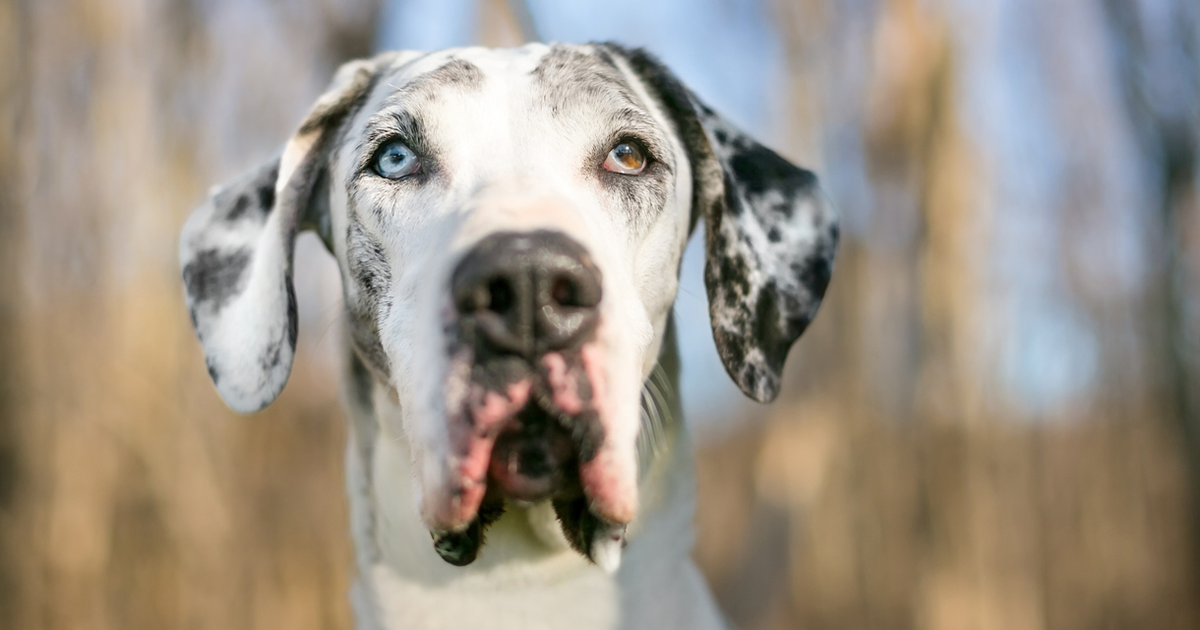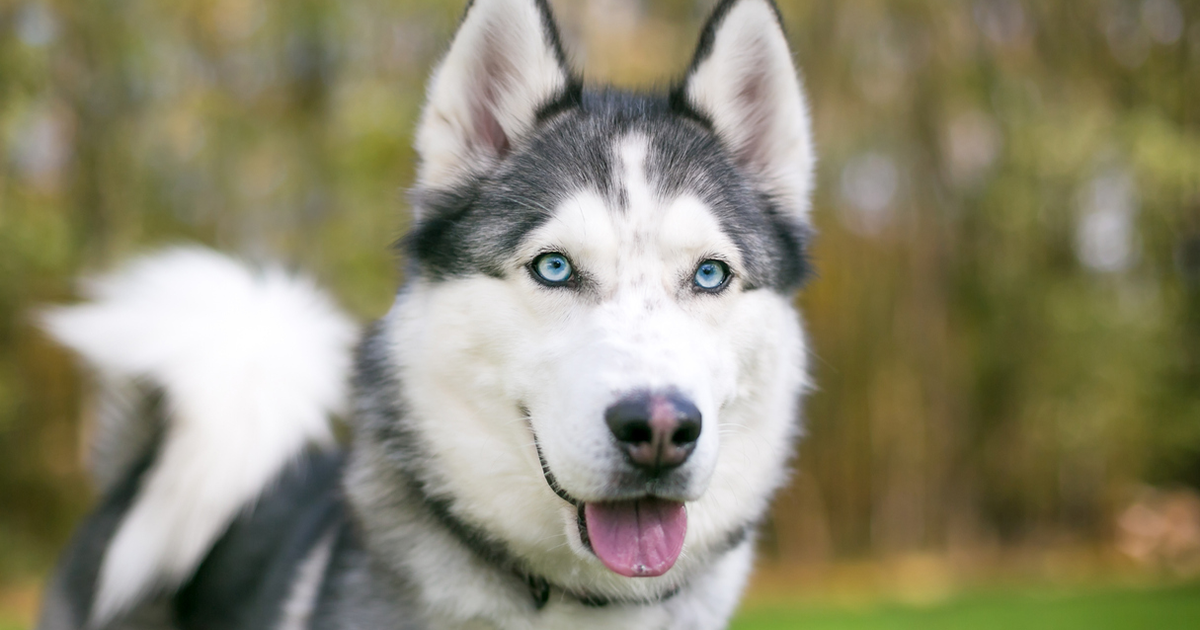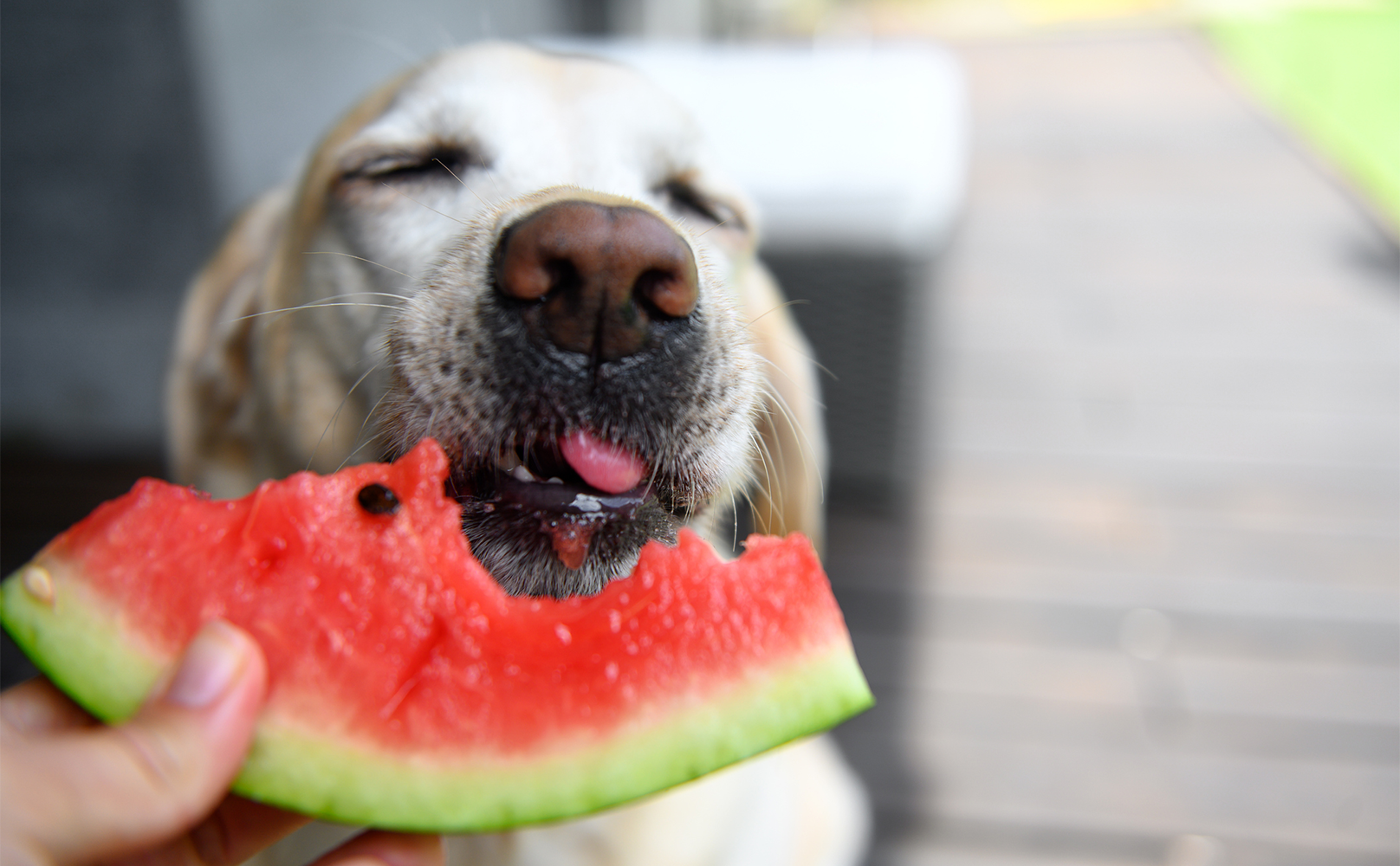This article was reviewed by professional dog trainer Shelby Semel, an advocate of Positive Reinforcement Dog Training.
Animal lovers—have no fear! You don’t have to take sides! Despite the enduring stereotype that cats and dogs just can’t get along, I’m here to show you that it is possible.


Many dogs and cats can learn to tolerate each other, and maybe even become friends, with proper training and socialization. It is important to note, however, that these animals have very distinct personalities, so the process will require much needed time and patience (think months not hours). If you’re not up for the task, you might want to reconsider introducing a new pet into your home.
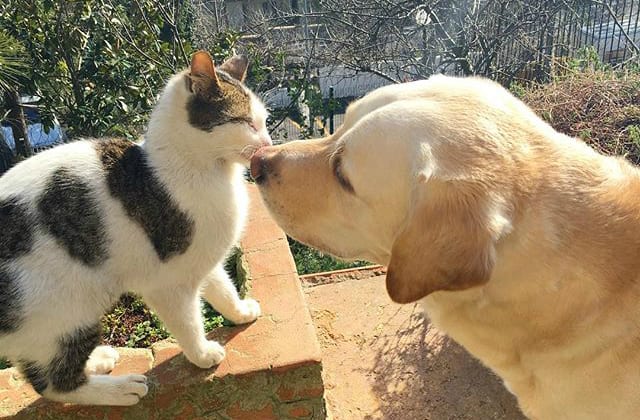

First and foremost, matching the personalities and lifestyles of the dog and cat in question is crucial if you are determined to have everyone living happily under one roof. Your best chances are either adopting pets that have experience living with the other species, or adopting both animals when they are young and raising them together. In both cases, the cat and dog grow up learning how to coexist and are less likely to develop animosity towards one another.
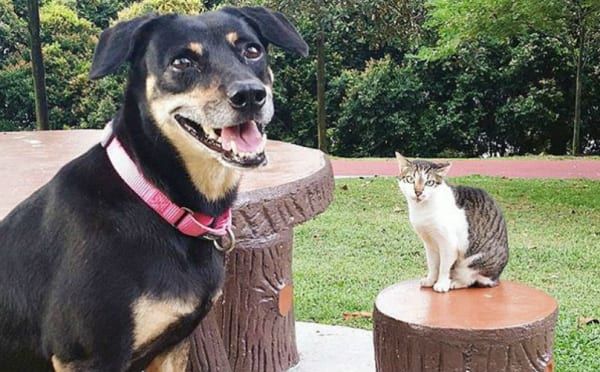

If you already have an adult dog or an adult cat, try to choose a furry friend who will complement them rather than cause tension. For example, if you have an adult dog with high energy, aim for a calm and confident adult cat. Many dogs have the instinct to chase small animals like cats, but this type of cat is unlikely to run and will not perpetuate this dangerous behavior.
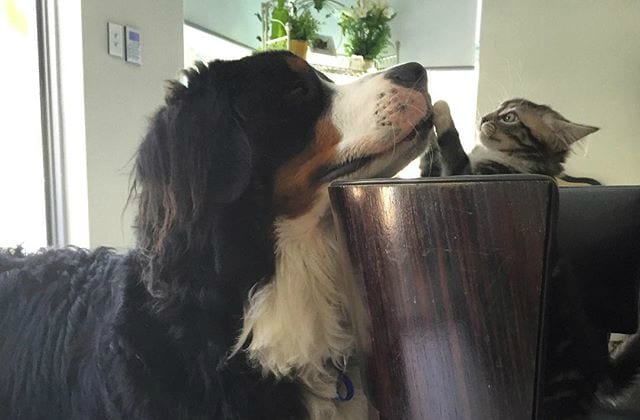

Once you’ve found your pet’s perfect match, you can finally prepare for everyone to meet! Below are some of the best tips for pet owners offered by the American Humane Association and several Certified Professional Trainers and Behavioral Specialists which show us how you can make your cat or dog’s transition into your family dynamic go as smoothly as possible. The ultimate goal is teaching both animals to be both calm and comfortable in each other’s presence. You will essentially be desensitizing one to the other.
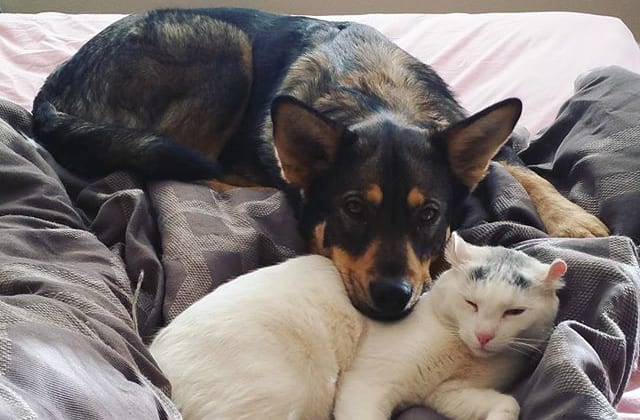

To start, you want to make sure you are in a safe and controlled environment (such as the comfort of your own home). Anywhere else may cause the animals additional stress and result in a bad interaction. As I’m sure we all know, first impressions are a big deal!
[bp_related_article]
Set up the cat and dog’s belongings (food and water dishes, litter box, et cetera) in separate areas that the other will not have access to. Also be sure to check that there is ample space for your cat to run and hide if he or she ever feels the need to flee. You can even help create escape routes by installing baby gates or a cat door. Safety first!
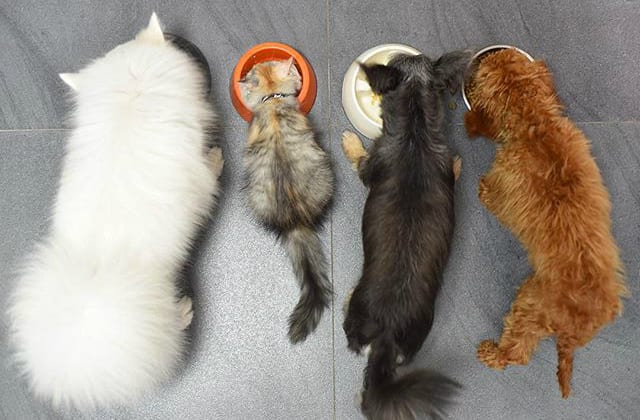

After you have chosen a proper location and it is all set up, you can follow along with this introduction process:
Step 1: Separate the animals and swap scents
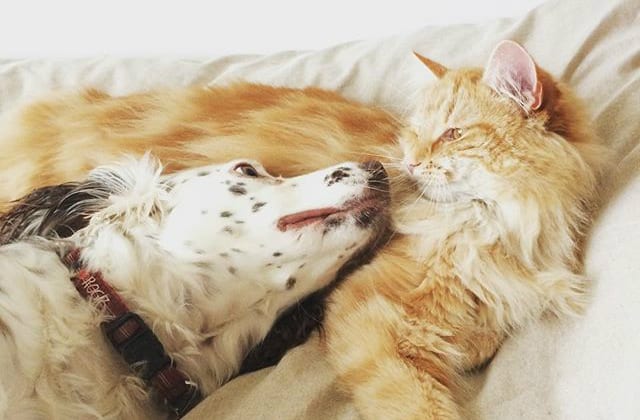

Over the span of a few days, alternate confining one animal to a separate room or crate and letting the other roam freely throughout the house. This will enable both the cat and dog to investigate each other’s scents and living areas prior to meeting. You can further acquaint them with these scents by rubbing a cloth on the cat or dog and then placing it somewhere that the other spends a lot of time, such as by a bed or food dish. Keep doing this until the excitement triggered by the new and unusual scents dies down. When the cat and dog are both calm and eating or using the litter box normally, you can proceed to the next step.
Step 2: Let the animals see each other
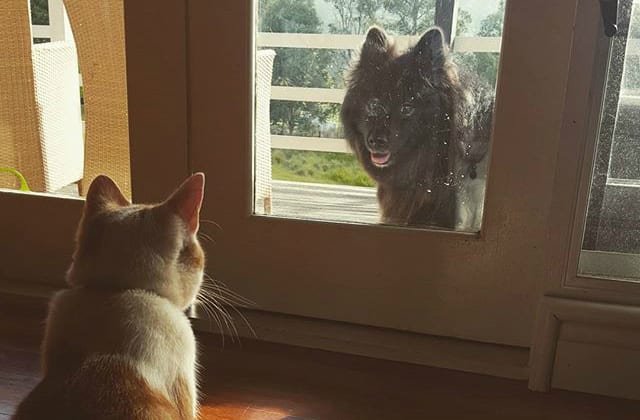

Before letting them get too close, you should try introducing the cat and dog through a barrier such as a door or baby gate. Have someone stand on one side with the dog, and someone else stand on the other with the cat. Do not force your cat to stay there if he or she gets scared or uncomfortable. Simply allow the animals time to look at each other and sniff around the barrier. Rewarding both of them with treats and praise during this time will help them associate good feelings with the other’s presence. DogTime.com recommends asking the dog to perform commands and providing rewards when he or she focuses on you and not the cat. Repeat these encounters until the cat and dog once again appear calm and comfortable.
Step 3: Make leashed introductions
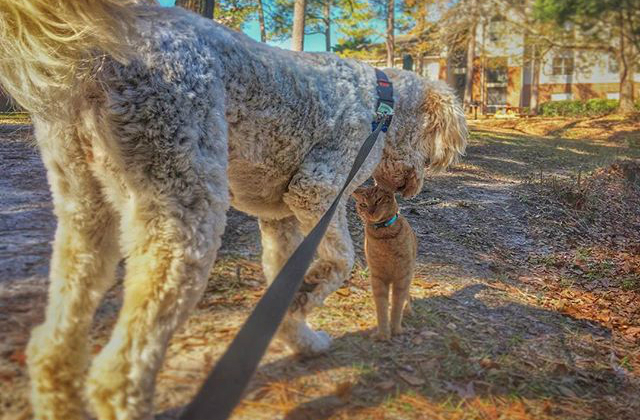

Secure the dog on a leash but, as in the previous step, allow the cat to remain free to prevent causing any stress or anxiety. Bring the two animals into the same room and begin observing their interaction. If the cat runs and the dog attempts to chase, grab the leash and firmly tell the dog “Leave it.” (Avoid the use of “No!” to prevent negative associations with this new go at friendship.) Ask the dog to sit and stay and reward him or her with a tasty treat for the restrained behavior. Positive reinforcement can go a long way! Other cats may hiss or swipe at the dog, but don’t worry; This confident behavior will encourage the dog to leave the cat alone rather than trigger the instinct to run. Practice and continue this step until both the cat and dog are relaxed and no longer bothered by or overly interested in one another.
Step 4: Have supervised interactions
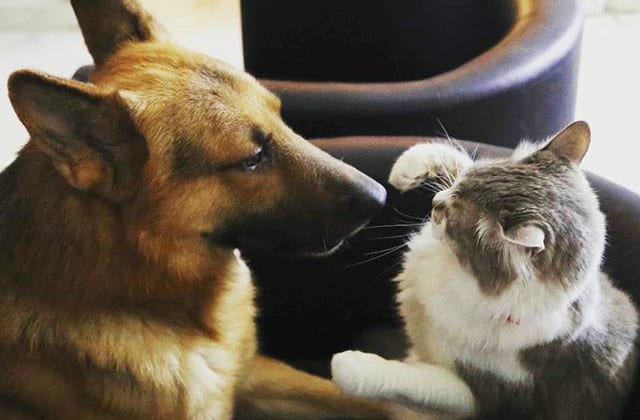

Let both of your pets roam about as long as you are home and able to intervene if something goes wrong. When you go out, it is still advised to keep one or both of the animals securely separated at this stage. Supervise your pets’ time together for an extended period of time (a month or so depending on your unique situation).
Step 5: Have unsupervised interactions
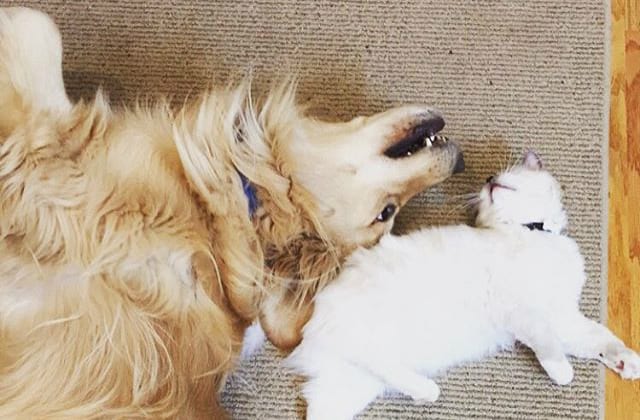

When you are 100% confident that your cat and dog are comfortable together and are not going to hurt each other, you can allow them to freely interact without your guidance and supervision. If your pets can coexist peacefully, or even grow fond of each other, congratulations!
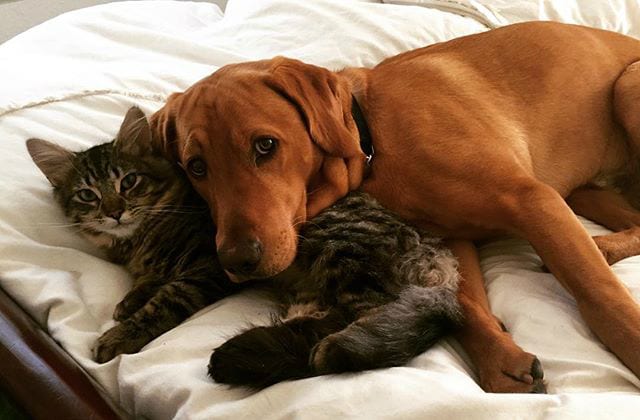

If none of the above methods prove successful with your pets, or if you have questions about your specific type of cat and dog, you should consult a professional. Certified trainers are highly skilled and will hopefully be able to help guide you and determine what is best for you and your pets. In some cases, such as with adult dogs with already highly developed prey drives, your pets may not be able to interact freely without concern for the other’s safety.
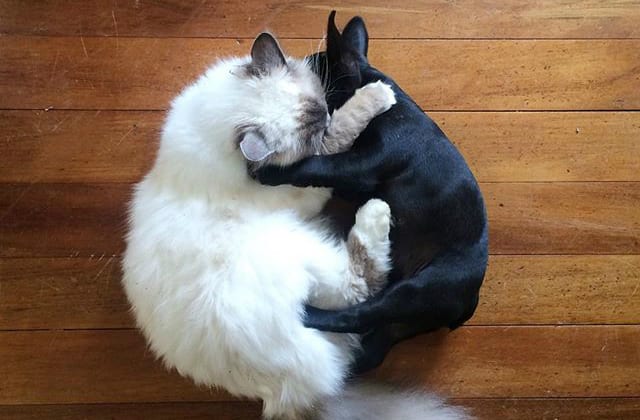

Always be very cautious and observant in these sensitive situations – cats and dogs as best friends is a great image, but nothing beats a pet who is happy and healthy!
Source: American Humane Association, DogTime.com, PAWS, Legends Dog Training



